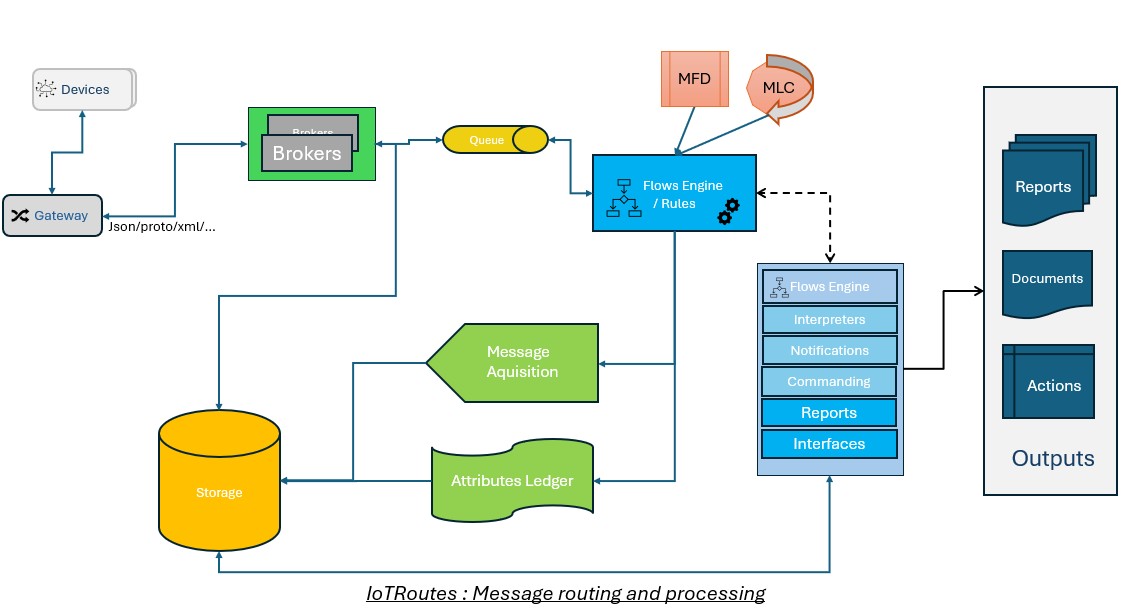Concept of the IoTRoutes solution
IoTRoutes is a platform designed to receive IoT messages from devices and route them to various internal processes or external systems. Through configurable workflows rich in predefined actions, internal processes perform conversion, interpretation, analysis, alerting, report or document generation, and execution of actions such as sending commands to devices or data to internal or external APIs.
Depending on the devices, their classes, their vendors or their firmware, the messages sent to the platform can be of different formats (XML, JSON, Protobuf, etc.) and with different structures (content structuring). The IoTRoutes platform, to understand them then, its acquisition process begins by converting the message into a version understandable by the platform, called Platform Message Structure (PMS).
Once the message is stored in the database and queued in PMS format, the platform then applies the configured Message LifeCycle (MLC) for messages exchange (inbound and outbound).

- Brokers: IoTRoutes uses one or more MQTT brokers to manage real-time communication between devices and the platform.
- Received messages are immediately stored in the database and queued for acquisition.
- Workflows are launched to process messages in the queue, starting with conversion into a Platform Message Structure (PMS). The conversion is based on a Message Format Definition (MFD) library.
- Message Format Definition (MFD) : Each MFD describes how to interpret and map an incoming payload into the PMS structure.
- Other processes can be executed to initiate actions required by the lifecycle, such as value interpretation, notification, device control, etc.
- The message status is updated each time the process advances through the lifecycle stages (MLC).
An entry in the Attributes Ledger : The Attribute Ledger is a core persistence layer within IoTRoutes that records all attribute values received from devices.
It ensures that every measurable, configurable, or event-related attribute transmitted by a device is captured, normalized, timestamped, and stored in a consistent format.Each attribute entry represents a discrete, time-stamped data point in the life of a device — forming the foundation for analytics, dashboards, and historical insights.
Handling of Large Attributes (Binary Data) : For attributes carrying large binary content, such as: Images or snapshots (e.g., camera frames), Audio recordings, Video clips, Large binary files or encoded payloads, the Attribute Ledger does not store the binary data directly. Instead, it stores a reference URI (or object key) pointing to the actual file location in the Bucket File Database.
Next : Guide/Overview
